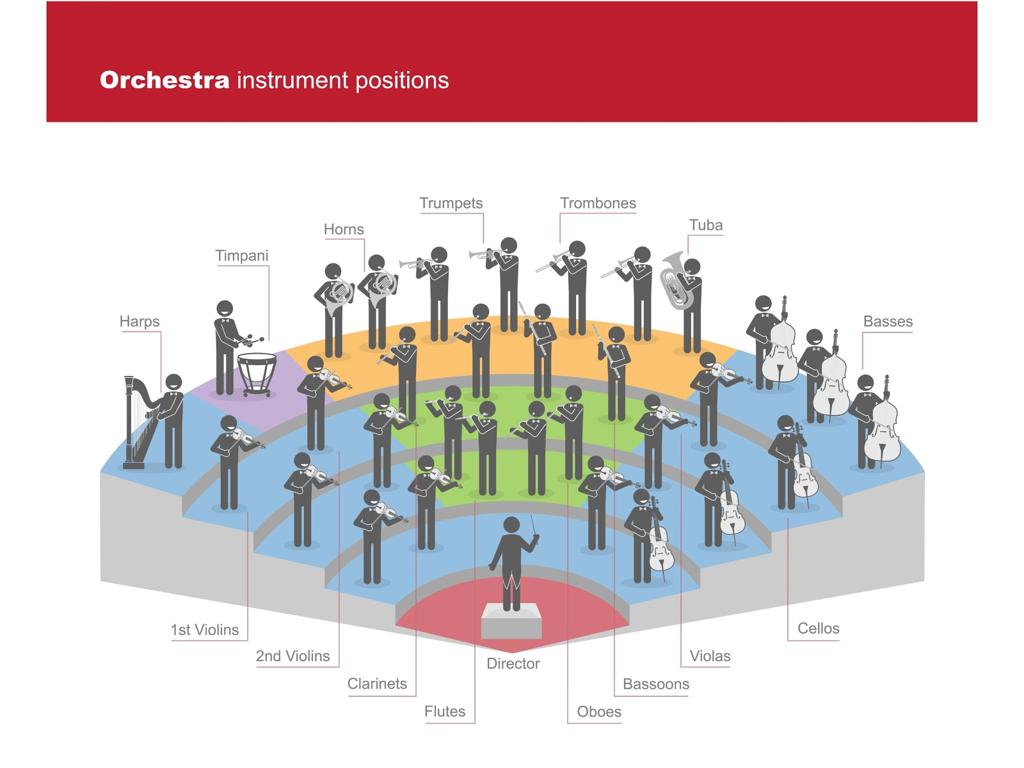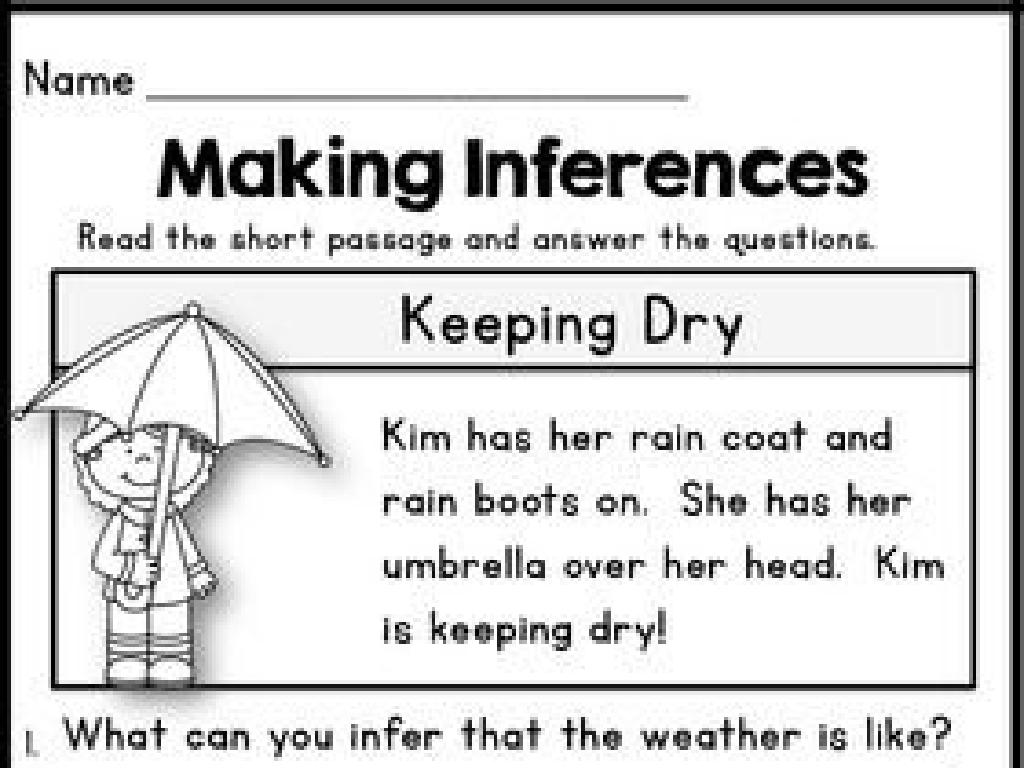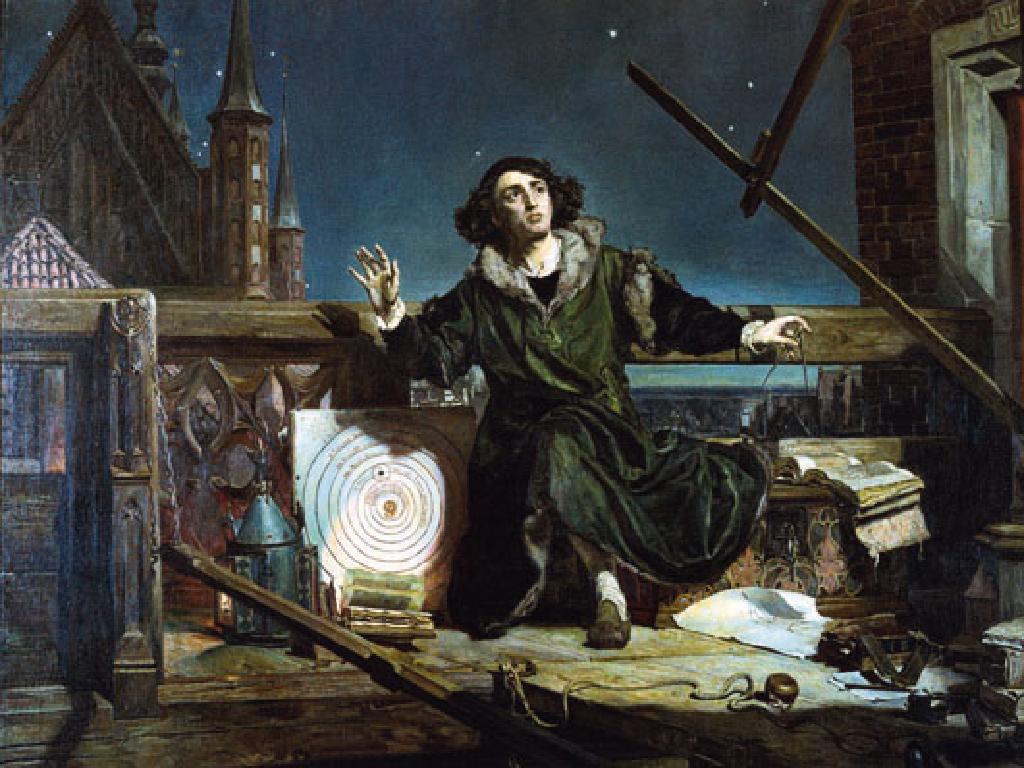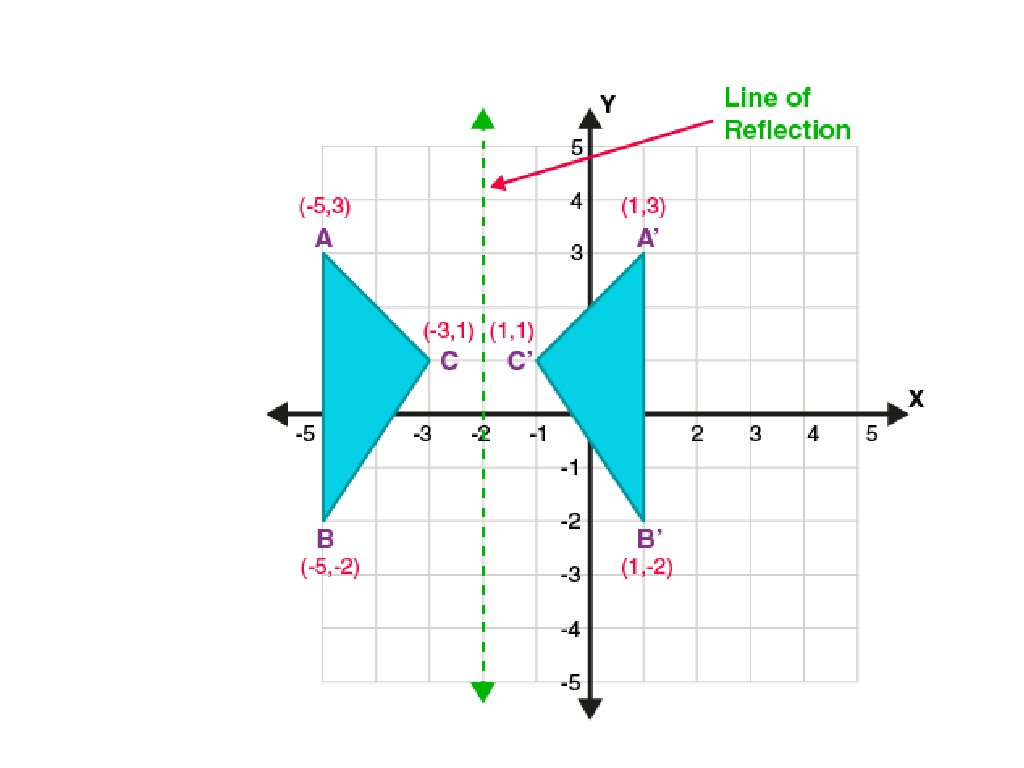Match Problems With Their Solutions
Subject: Language arts
Grade: Fifth grade
Topic: Text Structure
Please LOG IN to download the presentation. Access is available to registered users only.
View More Content
Text Structure: Problems & Solutions
– Texts have building blocks
– Today’s focus: Match problems with solutions
– Identifying problems and solutions
– Find the challenge the characters face and how they solve it
– Why it’s important in stories
– Helps understand the plot and character development
|
This slide introduces the concept of text structure, focusing on the ability to match problems with their solutions within a story. Emphasize that understanding the building blocks of texts, such as setting, characters, and plot, is crucial for comprehension. Today’s lesson will help students recognize the issues characters encounter and the resolutions they find. Discuss why this skill is important: it aids in grasping the story’s message, enhances critical thinking, and allows students to predict possible outcomes. Encourage students to think of their favorite stories and the problems and solutions presented in them.
Exploring Text Structures
– Understanding text structure
How information is organized in writing.
– Types of text structures
Description, sequence, comparison, cause/effect, problem/solution.
– Matching problems and solutions
Identify issues and how they’re resolved in text.
– Examples of each structure
See how different structures work in passages.
|
This slide introduces the concept of text structure to fifth-grade students, emphasizing the importance of organization in writing. Start by explaining that text structure is the way information is arranged in a passage, which helps readers understand and analyze the content. Discuss the five main types of text structures: description, sequence, comparison, cause and effect, and problem and solution. Provide clear examples for each, such as a story with a clear beginning, middle, and end for sequence, or a text that outlines a problem and then gives a solution. Encourage students to think of their own examples and to practice identifying the different structures in texts they read. This will help them with comprehension and in their own writing.
Identifying Problems in Stories
– Understand what a problem is
– A problem is a challenge characters must overcome.
– Clues to find problems
– Look for words like ‘challenge’, ‘issue’, ‘dilemma’.
– Read a story excerpt
– We’ll read a part of a story in class.
– Identify the problem together
– Let’s discuss and find the problem as a team.
|
This slide is aimed at helping students understand how to identify problems within a story, which is a key component of text structure. Start by defining what a problem is in the context of a narrative. Explain that problems are challenges or issues that the characters in a story must face and overcome. Highlight the importance of keywords that often signal a problem, such as ‘challenge’, ‘issue’, ‘dilemma’, ‘obstacle’, and ‘conflict’. Read a short excerpt from a story as a class, and work together to identify the problem presented in the text. Encourage students to use the clues and keywords discussed to pinpoint the problem. This activity will enhance their analytical skills and their ability to understand and interpret stories.
Finding Solutions in Stories
– Understanding a solution
– It’s how characters fix problems they face.
– Clues to find solutions
– Look for words like ‘solved’, ‘overcame’, ‘resolved’.
– Discussing story solutions
– Review the story excerpt and find how the problem was tackled.
– Applying our knowledge
|
This slide aims to teach students how to identify solutions within a story’s narrative. A solution is the method by which characters in a story resolve conflicts or problems. To help students recognize solutions, instruct them to look for key words such as ‘solved’, ‘overcame’, and ‘resolved’. These often signal that a solution is being presented. Use the story excerpt from the previous lesson to have students identify the problem presented and discuss how the characters arrived at a solution. Encourage students to think critically about why the characters chose that particular solution and what other solutions could have been possible. This exercise will enhance their comprehension skills and their ability to analyze text structure.
Matching Problems with Solutions
– Learn to match problems to solutions
– Identify cause and effect
– Look for ‘because’, ‘since’, ‘due to’ to find causes
– Practice with example problems
– Use sample scenarios to apply skills
– Connect problem and solution statements
– Find sentences that fix the issues presented
|
This slide is aimed at teaching students how to identify problems and their corresponding solutions within a text. Emphasize the importance of understanding cause and effect relationships, as they are often key to matching problems with solutions. Use language cues such as ‘because’, ‘since’, and ‘due to’ to help students recognize these relationships. Provide practice examples where students can apply this skill by matching problem statements with solution statements. Encourage discussion about why certain solutions are appropriate for the given problems. This will help students develop critical thinking and comprehension skills.
Let’s Practice: Problem & Solution
– Read a passage as a class
– Find the problem presented
– What challenge or issue is faced?
– Determine the solution given
– What action or decision was made to resolve it?
– Discuss the solution’s effectiveness
– Was the solution a good fit? Why or why not?
|
This class activity is designed to help students understand the ‘problem and solution’ text structure. Start by reading a passage together, ensuring that students are following along and engaging with the material. After reading, guide the class to identify the central problem presented in the text. Next, ask students to determine the solution that was provided. Finally, facilitate a discussion on whether the solution was effective and why, encouraging critical thinking and reasoning. This activity will help students to not only recognize text structures but also to evaluate the quality of solutions in various contexts. Provide support by giving examples of problems and solutions from familiar stories or situations.
Group Activity: Problem & Solution
– Break into small groups
– Each group gets a unique story
– Find the story’s problem and solution
– Look for challenges characters face and how they resolve them
– Get ready to present your findings
– Discuss who will speak and what you’ll say
|
This activity is designed to help students understand the problem and solution text structure by working collaboratively. Divide the class into small groups and provide each group with a different story. Instruct them to read the story together and identify the main problem the characters are facing and the solution that is presented. Encourage them to look for keywords that might signal a problem (e.g., ‘challenge’, ‘issue’, ‘dilemma’) and solution (e.g., ‘resolved’, ‘fixed’, ‘overcame’). Once they have identified the problem and solution, each group should prepare a short presentation to share their findings with the class. This will help students practice their analytical and presentation skills. Provide guidance on how to summarize their story without giving away too much detail, and how to clearly explain the problem and solution they have identified.
Class Discussion: Problem-Solution Match
– Groups present problems and solutions
– Class votes on creative solutions
– Discuss varied story resolutions
– Not all problems are solved the same way; some take creativity, others logic.
– Reflect on the activity
– Think about what we learned from each other’s ideas.
|
This slide sets the stage for an interactive class discussion where students will engage in presenting the problems and solutions they’ve identified in their reading. Each group will have the opportunity to showcase their creativity and understanding of the text structure. After presentations, the class will vote on the most creative and effective solution, fostering a sense of community and critical thinking. The discussion will then open up to explore the different methods characters in stories use to solve problems, emphasizing that there isn’t always a single right answer. Encourage students to think outside the box and appreciate diverse thinking. Conclude with a reflection on what was learned from the activity, asking students to consider how they can apply these problem-solving techniques to their own lives.
Wrapping Up: Problems & Solutions
– Review problems and solutions
– Why text structure matters
– Understanding text structure helps us comprehend and analyze stories better.
– Homework: Story analysis
– Find a story, identify the main problem and its solution, and write them down.
– Be ready to discuss in class
|
As we conclude today’s lesson, recap the concept of problems and solutions within a story, emphasizing how this understanding aids in comprehension. Highlight the importance of text structure in dissecting and appreciating literature. For homework, instruct students to choose any story they enjoy at home, identify the central problem and solution, and write a brief description of each. This exercise will reinforce their learning and prepare them for a class discussion. Encourage creativity and critical thinking, and remind them to bring their examples to the next class for sharing and discussion.






